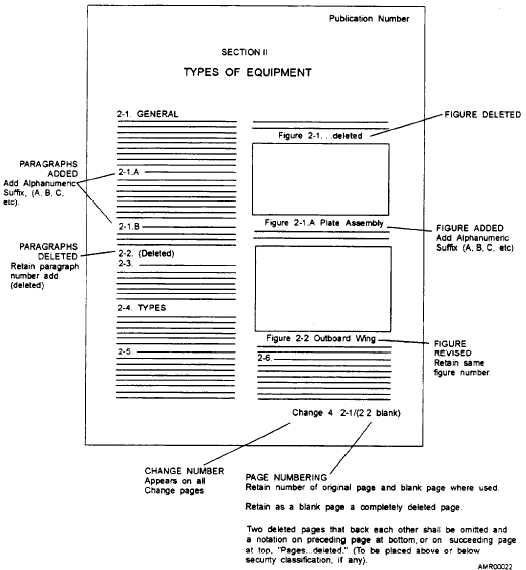Therefore, except when a number is added at the end
of a sequence (in which case the next consecutive
number is used), paragraphs, illustrations, tables, and
pages are numbered by adding an alphabetical suffix.
The same method is used for added pages, except that
these pages are not added between a right-hand (odd
numbered) and a left-hand (even numbered) page.
When new material is added to a right-hand page, any
overrun is carried to the left-hand page. Any overrun
from this is placed on an added page. Therefore, added
pages are always assigned even numbers, such as 2A,
2B, 4A, or 4B.
Each page with changed or added material bears
the word “change...” placed at the bottom of the page
(fig. 2-9). For foldout pages, the change number is
placed in the lower, outer corner of the page beneath
the figure title. This change number requirement
applies to all added pages, including those placed at
the end of a manual.
Change Symbology. Usually, text and table
changes, including new material on added pages, are
identified by a vertical line or change symbol in the
margin. This line or symbol extends the entire length
of the affected material. The line is placed on the outer
margin for double-columned material, and in the
margin opposite the binding edge for single-columned
material (fig. 2-10). There is one exception. Pages with
emergency markings (black diagonal lines around
three edges) may have the vertical line or change
symbols along the inner margins.
When a page is changed, previous change symbols
on a page are deleted. Symbols show current changes
Figure 2-9.—Supplement format, conventional manual (paragraph illustration and page numbering).
2-9

